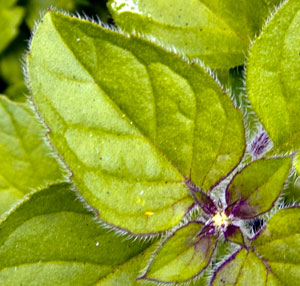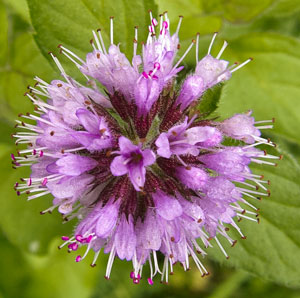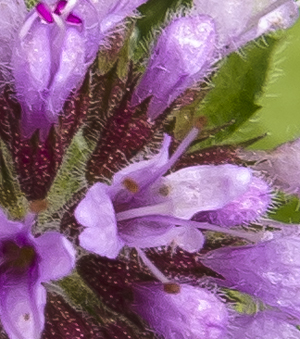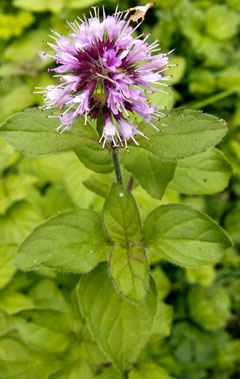Marjoram
Leaves and stem

The leaves are borne in opposite pairs on slender (square) stems.
Like many of the mint family, the stems and leaves are 'hairy' - and they are borne on short stalks or petioles.
The leaves are 'oval' in shape (and pointed) and have a somewhat toothed margin / edge. Young leaves may be tinged with red / purple colour at the base and on the leaf margin.
Flowers and Fruits

The flowers are borne in what have been termed 'loose heads' or clusters.

The numerous small, purple buds turn to paler, purple flowers (two lipped), which have small purple bracts at their base. Each flower has four stamens.
Ecology and other notes
Marjoram (Origanum vulgare) is a perennial, with a distinctive aromatic scent - particularly if the leaf is crushed or rolled between the fingers. It varies in height from 12 to 24 inches.
Marjoram is a plant that is common in grassy places - especially where there is underlying chalk or limestone.
However, marjoram may be found in woody areas, where there are open rides / tracks. It is less common in northern parts.
Like the deadnettle, marjoram is a Labiate or member of the Lamiaceae - which are 'characterised' by hairy or downy leaves and stems, and the stems are roughly square in cross-section.
Cultivated marjoram is Origanum majorana .
